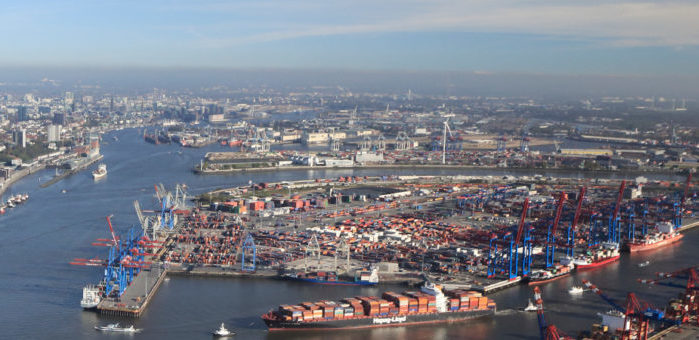The Port of Hamburg Authority along with partners successfully tested an innovative 5G application focusing on fixed-line and mobile communications that will contribute to the efficient operation of the port. 5G is a new network concept that aspires to enhance the traffic in the port of Hamburg and provide a helpful tool for HPA. This app is the first of its kind to allow networks to be adapted dynamically and flexibly to the demands of a broad spectrum of applications.
The collaboration between Hamburg Port Authority, Deutsche Telekom and Nokia had a successful outcome when testing the 5G application at the port of Hamburg. The port of Hamburg covers around 8,000 hectares and in order to test the reliability of the new application the partners used three case studies based on real-life.
- Firstly, they have installed sensors on ships belonging to HPA’s subsidiary, Flotte Hamburg GmbH & Co. KG. These sensors send movement and environmental data from across large swathes of the Port in real time;
- Moreover, in order to test this innovative app, a traffic light has been linked to the mobile network and can be used remotely by the HPA control centre. This will help HPA to control the port’s traffic flow. For example, trucks could be guided quickly and safely around the site;
- A third real-life case study is based on transmitting 3D data to an augmented reality application. In other words, the new application makes high data volumes available quickly outside of existing networks. Smart glasses use the information to show wearers building data relating to future or former structures in a real time. In future, this technology will help engineers to monitor or optimize construction planning directly on site at the Port.
[smlsubform prepend=”GET THE SAFETY4SEA IN YOUR INBOX!” showname=false emailtxt=”” emailholder=”Enter your email address” showsubmit=true submittxt=”Submit” jsthanks=false thankyou=”Thank you for subscribing to our mailing list”]
The 5G trial at the Port of Hamburg is embodied in a two-year research project called 5G MoNArch, 5G Mobile Network Architecture for diverse services, use cases, and applications in 5G and beyond. The field test is set to run for two years and will achieve a basis for defining further aspects of the 5G standard.
It is not only focusing on making bandwidths ever larger or speeds ever faster. It is set to be used for many different applications with very various requirements in terms of speed, response time, security and capacity. The 5G application will be the key to the construction of new applications emerging from the Internet of Things and Industry 4.0. Both the manufacturing and logistics industries in particular are expected to benefit from 5G mobile communications.
The three partners hope to gain evidence that complex mobile applications with a variety requirements can work over one single network. In order to cope with these demands, the mobile network in the test environment is split into special virtual networks called network slices. Each one supports a specific requirement. The result is separate virtual networks that can be used for managing, for example, the traffic light system.
Finally, a transmitter installed at a height of over 150 meters on Hamburg’s television tower in January 2018 provides the technological basis to test the application. The stability of the mobile signal is monitored and verified by many measurement runs on land and the River Elbe. Industrial applications require a telecommunications network that is particularly reliable and highly secure.






























































